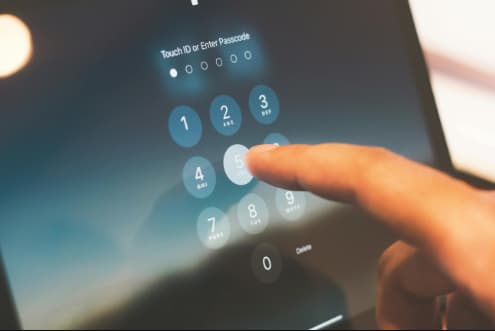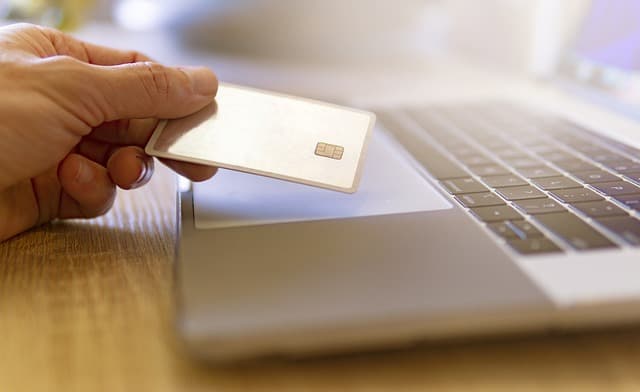The number of online shopping scams and identity thefts increases every year. While hackers and fraudsters are perfecting new methods, many mobile device users still don’t know the simple rules of safe online shopping.
You don’t have to be one of them. Read on and take precautions to protect your hard-earned money and shop safely.
How online shopping puts you at risk
Shopping online may seem safe, but that’s far from the truth. It takes two things to be safe: an online store that cares about customer safety, and smart consumers who know how to protect their personal information.
Hacking and identity theft are not as visible as traditional theft, and hackers are harder to catch. However, millions of people fall victim to online theft each year. You don’t have to be one of the victims. With a few simple rules and tricks, you can shop safely on your smartphone.
Basic rules to prevent online fraud
- Only shop on HTTPS sites
Make sure that the online store you visit uses HTTPS. This means that your data is protected by basic TLS encryption all the way from your browser to the site where you shop. HTTPS sites aren’t necessarily super-secure, but if an administrator has implemented HTTPS to protect your data, you know they’ve taken at least one important step. It’s easy to check – just look in the address bar to see if there’s a padlock icon next to the web address. If the Web site is unsafe, you’ll see a circle with an “i” on Android devices and an “Unsafe” message on iOS.
- Make sure you’re visiting a legitimate online store
Before you enter any personal information to complete your purchase, make sure you’re at the right online store. Hackers and scammers have many opportunities to redirect you to the wrong website or, in other words, spoof the URL. You might think you’re buying new sneakers directly from Nike, but you ended up at “n1ke.com” (hypothetical example). If that’s the case, it’s time to delete everything you just entered and back off!
- Be careful with URL shorteners
Marketers love URL shorteners because they make long URLs filled with tracking codes less unsightly. However, scammers can also use URL shorteners to hide the URL they send you to. When you see ads with an abbreviated URL, consider going to the brand’s website yourself by simply using the address bar. Chances are, you’ll find the same deal on their site. Otherwise, it’s possible that the URL abbreviation you listed was used by a scammer. There’s nothing wrong with clicking on a shortcut, but if you do, make sure the URL you go to looks legitimate.
- Avoid links in emails
Another method that scammers can use to get your credit card information is phishing. This is a very popular and effective way to “hack someone” using carefully crafted emails. They usually offer you discounts or offers that are hard to refuse. They may also include a fake URL that will take you to an order page and make the scam even more convincing. Whenever you get an email like this-especially on Black Friday, Cyber Monday, or just before New Year’s Eve-ask yourself the following questions:
What are they asking for? Most legitimate websites won’t ask you for more information after you make a purchase. If an email asks you for a password or some information that should already be on the site, it’s a scam.
Where do these links lead? You’d better not click on any links in the email before you check the URL they sent you. Does it use the same domain name (“paypal” for www.paypal.com) and top-level domain (“.com” for www.paypal.com)? You can hover over the link or right-click on it before you click on it to see where it leads.
Who is the sender? Anyone can set their visible name as “Paypal.com” or “SberBank,” but only an employee of these companies can use an email address ending in @paypal.com Make sure you research their email address carefully before trusting them.
- Never shop on public
Wi-Fi networks If possible, never shop online on public Wi-Fi networks. Public Wi-Fi is an ideal place for scammers and hackers to operate. These networks have low security and can be scanned by hackers looking for weak connections. If you absolutely must use public Wi-Fi, install and run a VPN on your smartphone. An encrypted connection ensures that your online banking or credit card credentials are safe when you click “Buy.”
- Keep track of your debit and credit card statements
This may seem obvious, but you should always keep track of your purchases and their prices. This can help you spot potential hacks or dishonest business practices so you can react as soon as possible. Legitimate companies may manipulate discounts or add hidden fees that will be charged to you after you complete your purchase.
If you use the banking app, turn on push notifications to keep track of the payments you make. You can even call your bank to see what other notification options are available, or simply order your debit card or credit card statements. Pay attention to fraudulent payments. When you see them, contact your bank to dispute the charge and close the card. This will make the leaked information useless in the hands of a hacker.
- Consider using a virtual credit card
A virtual card is exactly what it looks like – a purely digital bank card that can only be used online. By linking it to a real credit or debit card you own, you can make purchases online without even revealing the actual card information. You can also set up your virtual card so that it only allows you to make purchases for a certain amount or expires after a certain day.
- Update your browser regularly
Your browser is what takes you from one online store to another. That’s why it’s important to keep it updated to take advantage of the latest security improvements and bug fixes.
There are many hacking techniques that target the vulnerabilities of outdated browser versions or unprotected online stores. After all, updates are usually released to fix known vulnerabilities. Don’t give hackers a chance and stay informed.
- Practice strong password protection
Good password protection is always important, but it’s easy to forget that when you create new accounts to shop at different online stores. Creating unique and secure passwords for each site (and remembering them) can be tricky, but there are tools that can help you – password managers.
- Shop only from trusted apps
When using shopping apps, be sure to download them from official sources: the Play Store for Android users and the App Store for iOS. Avoid downloading apps from suspicious sites, as this is an easy way to get malware on your smartphone. However, not all apps in official stores are trustworthy. We recommend always checking reviews and looking for more information about the developers.
The less information you provide, the better After making a few purchases on trustworthy websites, you begin to understand what data they require:
- Your payment information;
- The address where you want them to ship your product;
- Your name and contact information.
If a website asks you for more personal information, turn around and leave. Some websites ask for additional information for marketing purposes, but this is not required. No website should ask for your personal identification number or password to access another site or service in order to sell you something. If they ask, turn around and run – you’re probably about to be scammed. One last piece of advice – always be vigilant. If something sounds too good to be true, it’s probably a scam.




